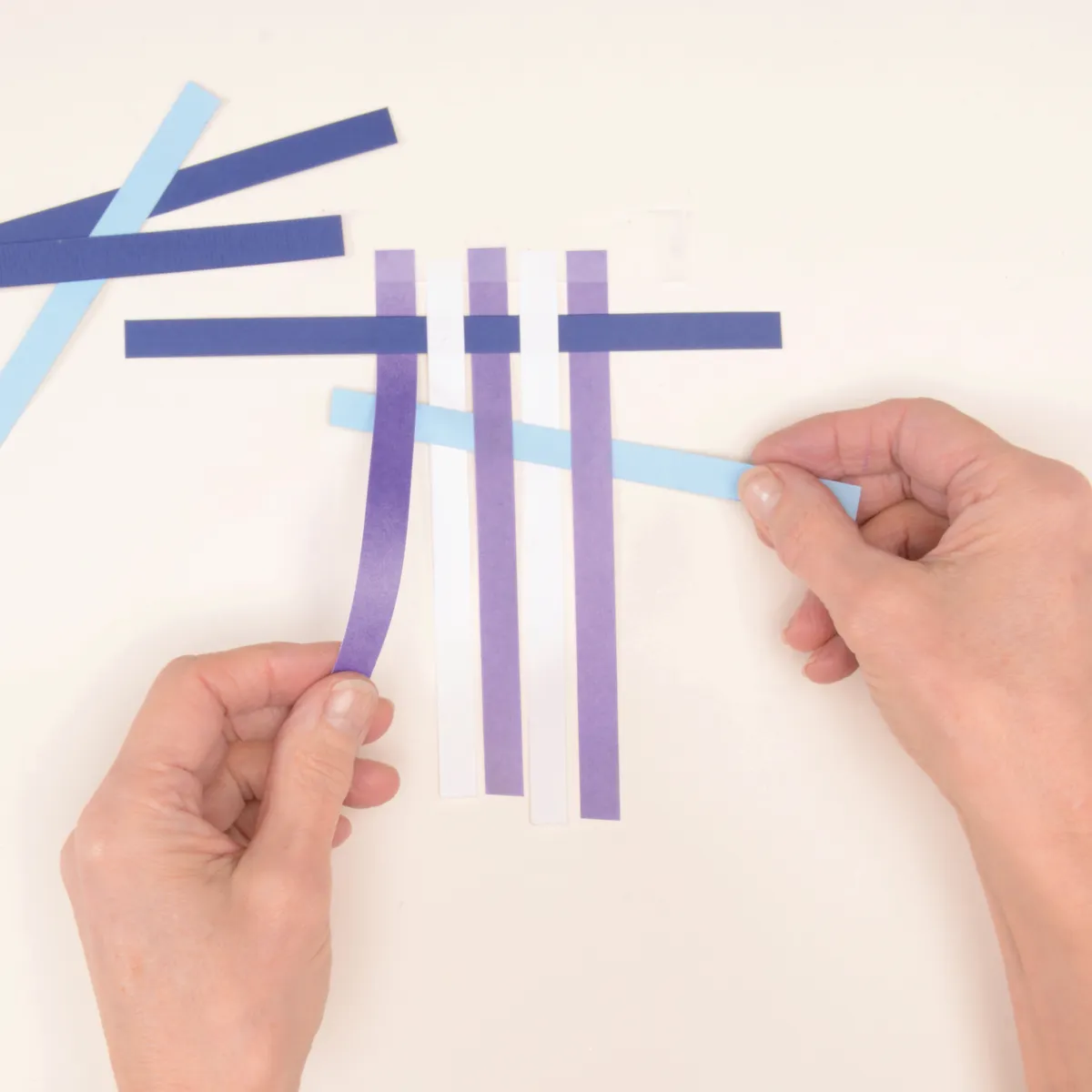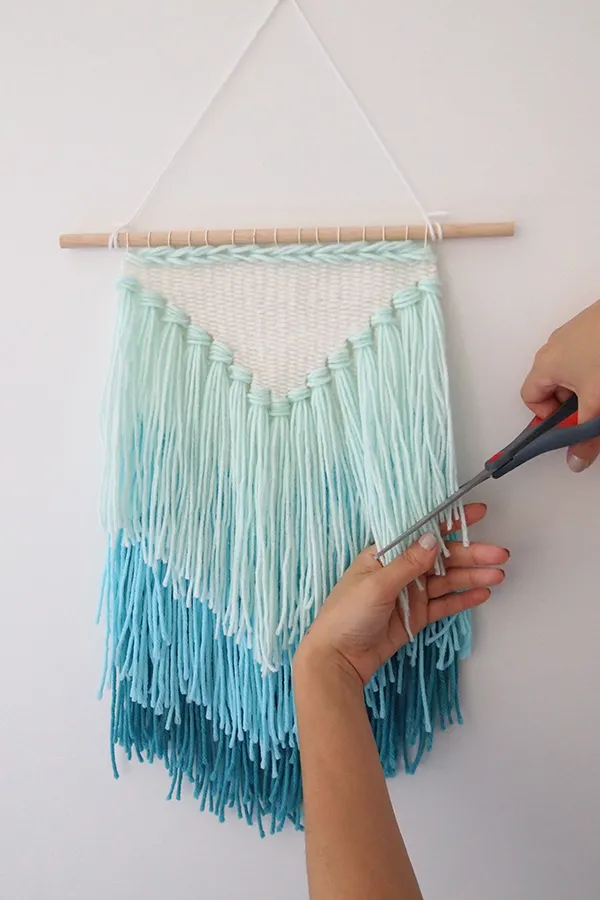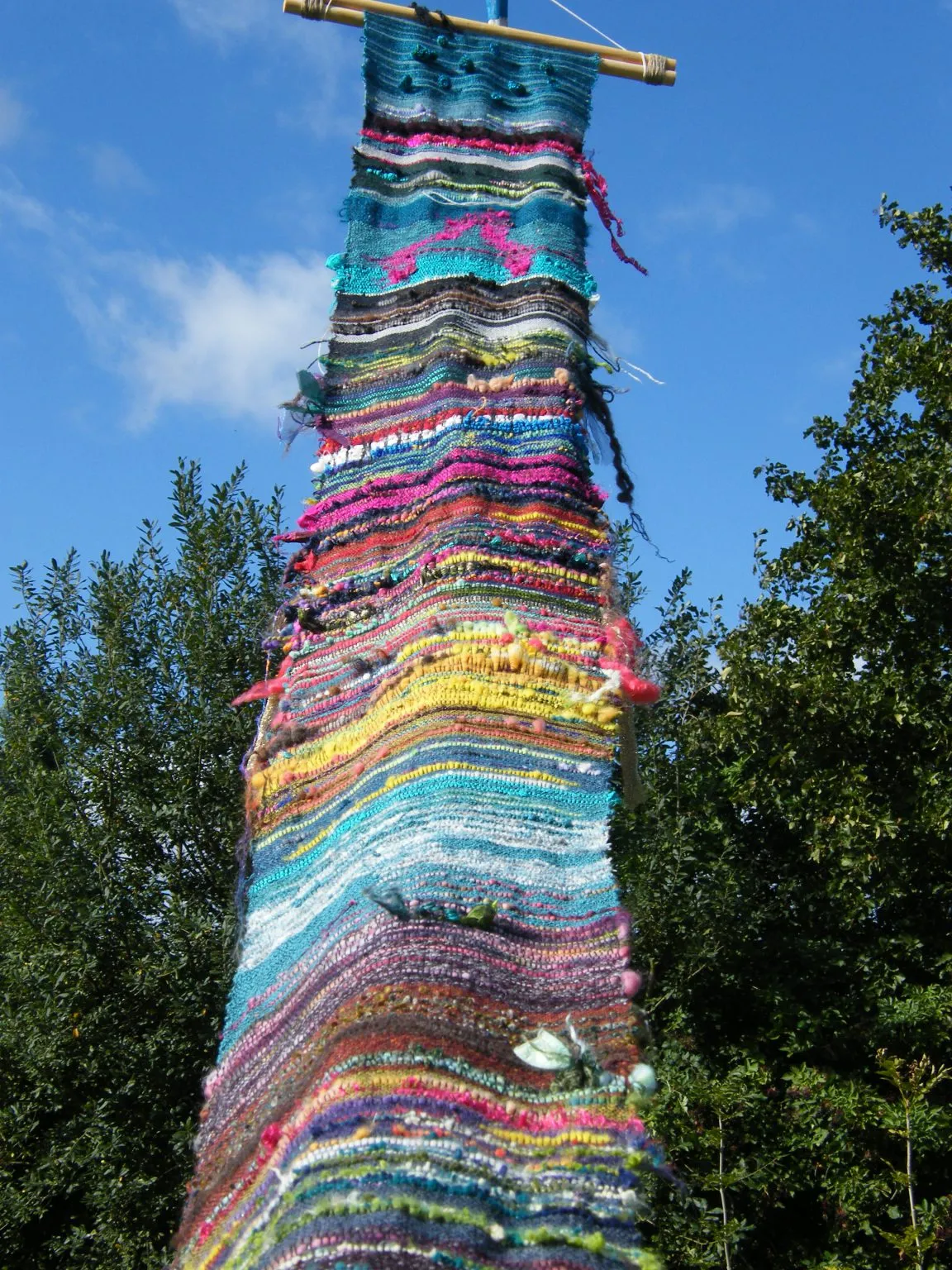Weaving is a gorgeous craft that not only helps crafters to relax through the meditative weaving technique but also produces incredible results.
There's plenty of different types of weaving out there from traditional basket weaving to tablet weaving and all these types use different techniques. Each type of weaving uses different weaving patterns to create its unique style.
For the popular loom weaving, we explained all the techniques in our beginner's guide to weaving covering everything from the basic rya knot to Soumak.
In this article, we're going to cover some of the other basic weaving patterns that are out there as well as some of the different types of weaving you can do. Oh, and there will be a range of projects for you to make using these techniques too!
We'll cover everything from plain weave to the more complex weaving patterns like houndstooth and honeycomb.
Each weaving pattern is used across a range of different crafts too so whether you're into papercraft or yarn crafts you can still benefit from these weaving patterns. So without further ado here's our favourite weaving patterns!
27 weaving patterns
Plain weaving

Plain weaving is the simplest weaving pattern you can follow and it's probably the one your most familiar with. Plain weaving is used in all sorts of crafts and we show you how to weave with paper over in our card tutorial. It includes three different plain weaving patterns which you can turn into cute cards.
Basketweave

Basketweave is a weaving pattern that's used in so many different crafts. From knitting and crochet to textiles and basket weaving, it's a staple weaving pattern that creates a gridded design.
Sarah-Jayne Fragola from Bella Coco Crochet shows you how you can use basketweave in your crochet projects.
Circular weaving

Circular weaving patterns can produce great results just like this DIY paper weaving basket.
The Crafty Gentleman teaches you how to weave in a circle using paper and we think this is much easier than trying to learn with yarn. Plus you get a useful basket to store all your weaving supplies in once you've followed his weaving pattern!
Peg loom weaving

This beautiful cushion is made using a peg loom! Peg loom weaving uses a wooden block with pegs that have holes drilled in them. You weave the yarn in between the pegs to create a design. Learn more about peg loom weaving over in our cushion tutorial.
Twill weaving
Twill weaving patterns are easy than they look - we promise! Twill weaving changes the amount of material you pass your needle under and over each line in order to create a diagonal pattern.
This diagonal pattern is more easily seen from the side on yarn projects but is really clear in paper weaving. Spruce & Linen has created a really easy-to-follow tutorial for this weaving pattern.
Herringbone weaving

Herringbone weaving is the sister weaving pattern of twill weaving. Where twill weaving patterns continue diagonally across your designs, Herringbone weaving switches the direction of the diagonal creating an offset V-type pattern.
It's a little difficult to explain but luckily the lovely The Weaving Loom has created a Youtube video so you can master it!
Multi-weaving techniques

Practice multiple different weaving patterns in this statement woven wall hanging project. You'll be using rya knots, tabby weaving, Soumak, and an assortment of accessories to create this piece but don't worry! It's still beginner-friendly.
Chevron weaving pattern
Chevron weaving patterns add a fabulous geometric aspect to your work. It's a type of twill pattern which creates an arrow design. Ava & Montague shows you how to do a chevron weaving pattern with strips of fabric that can be turned into wall art.
Pile weaving patterns

Pile weaving patterns are usually done with roving and can give a full, fluffy effect to your work. Simply Handmade Studios shows you how to do a pile weaving pattern over on her blog. She also shows you how to create this gorgeous piece.
Weaving scallops, hills and curves

Add hills and curves into your designs with Fibers and Designs tutorial. They show you how to create a scalloping pattern that you can use to block out different parts of your work.
Wave weaving patterns

Waves are really popular among weavers and add movement into your designs. A Pretty Fix shows you how to create waves in your weaves and make this statement wall hanging.
Rug Weaving

Rug weaving uses the same weaving patterns as other techniques (hello soumak!) just on a floor loom. Hand Woven Magazine has created some great weaving patterns like this Batik style.
Houndstooth weaving patterns

We love the traditional look houndstooth pattern and it can be achieved through weaving! Lili and Mums show you how to weave a houndstooth pattern into a funky scarf.
Honeycomb weave patterns

Honeycomb weaving patterns can be achieved on a heddle loom and turned into pillows, bags, or other homewares. It's an intricate design for the more experienced weaver. Schacht Spindle shows you how to achieve this honeycomb weaving pattern over on their blog.
Weaving organic shapes

Loops and other organic shapes are a great way to include texture in your design. Fibers & Design shows you how to add knots and loops over on their blog.
Tablet Weaving
Tablet weaving uses cards or tablets to weave on as opposed to the classic loom. Also known as card weaving, tablet weaving is a great one for beginners because it's inexpensive and simple to do.
You weave through the holes and the more holes that are in your tablet the more complex your weave will be. This video by Elf daughter Crafts is a great one for learning tablet weaving.
Basket weaving

Basket weaving is a beautiful ancient art that celebrates African culture and tradition. Many of the weaving patterns we've mentioned already are used in basket weaving they're just created with different materials like cane or rattan.
Basket weaving expert Tabara has written a beginners guide to basket weaving showing you some of the classic weaving patterns used.
Tapestry weaving

Tapestry weaving is an ancient art form that has become popular in recent years and we totally see why. Often used in medieval times to create intricate photo-realistic designs, tablet weaving is now more modern and creates big, colourful wall hangings.
It's now the most popular form of weaving and we have several tablet weaving projects here on Gathered.
Rya knots

Rya knots are a staple of weaving even though they're not technically a weaving pattern - they're a knot! Perhaps the simplest of all the weaving techniques, Rya knots create a tassel effect that is popular on wall hanging. You can practice your rya knots with our tassel wall hanging tutorial.
Satin weave

A satin weave is a fabric weave that makes everyone's favourite - satin! It creates the glossy look that so many luxe materials have and is mostly just used in the textile industry. This diagram by Treasurie shows the satin weave structure brilliantly.
Saori Weaving

Saori weaving is a freestyle weaving technique that originated in Japan. Created by the incredible Misao Jo, Saori weaving at its core is simple. It's a plain weave with 2 shafts which is created using a floor loom.
Using wool, cotton, silk, and a host of other materials it's a type of weaving that will let you express yourself in the most creative way possible. The Saori Shed explains more about the beauty of Saori weaving over on their blog.
Tumbling block weaving pattern

This funky weaving pattern is called Tumbling Block and The House That Lars Built has created it using bias tape. You can create the tumbling block pattern with paper, ribbon, or fabric and we just love the 3D effect it gives. Full diagrams are up and ready for you to copy over on The House That Lars Built's blog.
Diamond twill weaving

Diamonds really are a girl's best friend. Diamond weaving patterns create gorgeous shapes in your designs and really add a luxe feel. Kaliko has written out the weave pattern for diamonds on her blog along with other weaving patterns like chevron, reverse twill, and houndstooth.
Finger weaving

If you're new to weaving and don't want the cost of equipment and tools then finger weaving is for you. It uses a lot of the same weaving patterns but can be done with just some string and tape! Our how to make friendship bracelets tutorial is a great beginner finger weaving project.
Inkle Loom weaving

An Inkle Loom is a type of loom which specializes in making braided tapes. It's a unique style of weaving that gives you a lot of freedom in how you want to weave. The Beginning Artist has written a great guide to inkle loom weaving and we suggest giving it a read if you want to try this craft out!
Monks cloth weaving pattern

Monks cloth is a basketweave that has been used for centuries to create blankets, towels, throws and more. The Weaving Loom has a great photo guide that will help you to weave Monks Cloth over on her blog.
Pick Up Rows weaving pattern

Weaving patterns really are endless and Kelly Casanova demonstrates this over on her blog. She teaches you a series of weaving patterns for a rigid heddle loom that will make your designs extra pretty.
The Pick Up Rows technique is the traditional pickup pattern (the blue) repeated with the plain weave (maroon) being picked up just once.
Make beautiful projects with weaving patterns
Weaving is a crafting technique that can be used to make everything from textiles to baskets. Once you've learnt a few simple weaving patterns, you can make anything you want!
Get into needle punching to make creative textiles
If you love creating beautiful artistic creations using yarn, then needle punching is the craft for you! Needle punching creates yarn art with wonderful texture and you can use it to decorate cushions, wall-hangings and much more.
Get started with Gathered's needle punching for beginners guide.
